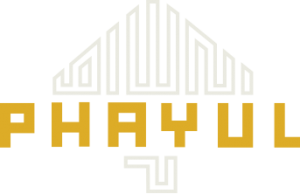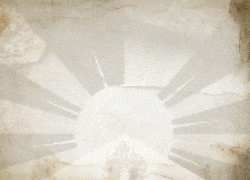The spiritual leader considers the Tibetan cause as his third objective in life; the first two being the fate of humanity as a whole and inter-religious harmony, writes Claude Arpi
 The Open Road: The Global Journey of the 14th Dalai Lama
The Open Road: The Global Journey of the 14th Dalai Lama
Pico Iyer may not have planned it, but his new book, The Open Road: The Global Journey of the Fourteenth Dalai Lama, appeared in the market in exceptional circumstances. His intimate portrait of Tenzin Gyatso, the 14th Dalai Lama, reached the bookstores as the Tibetans marched on the streets of Lhasa and several other places in the ‘Land of Snows’. Can an author hope for a better launch, even if it is fortuitous?
Though born in a Tamil family, Iyer was educated in the West and spends his time between two assignments for The Time or other reputed publications, in California and Japan. His book reflects the way millions in the West see the Dalai Lama.
Iyer starts The Open Road with the meeting of two young men "who had many things in common… Both of them were travellers, exiles… both were philosophers… both were coming of age at a time when cultures could reach one another as never before." These two men were the Dalai Lama and Pico’s father. A few years later, Iyer senior wrote a book for which the Dalai Lama contributed a foreword. The book was dedicated to Pico and "to those of his generation for whom there will be no curtain".
Many decades later, Pico realised the deeper meaning of this small sentence and remembered the encounter of his father with the young Dalai Lama. He became "intrigued by the quiet revolution he was promulgating, challenging us to see politics, globalism, celebrity itself in a larger and more spacious light".
What makes this book special is that Iyer, through his several meetings, audiences and interviews with the Tibetan leader, has been able to discern different facets of the rich personality of a man, who, born as the son a farmer in a tiny village of north-eastern Tibet (three months by caravan from Lhasa), was destined to meet as an equal the most powerful personages of the planet.
What strikes someone who meets the Dalai Lama for the first time is his lack of pretence; "I am just a simple Buddhist monk," he loves to repeat. A couple of months ago in Ahmedabad, I attended a function at IIM. The chairman of the prestigious institution introduced the chief guest as "a living Buddha". The Dalai Lama (nearly) got upset. He hammered several times, "I am not a living Buddha, I am just a monk." And for the audience of future CEOs, he added, "A Marxist monk, but a true Marxist, not like in China!"
What fascinated Iyer is the story of this monk and the way he deals with the world. First, he has to work with what Iyer calls the ‘Fairy Tale’: "He was found… after rainbows arched across the north-eastern skies of Lhasa, a star-shaped appeared on a pillar of the Potala Palace and the head of the 13th Dalai repeatedly moved in the north-easterly direction." Is not Tibet still a myth for millions? Iyer, however, deplores those who see him as "an emissary from some other world that does not exist".
Because the Dalai Lama is first and foremost a Buddhist monk, he is a realist. About 2,500 years ago, Gautam Buddha, whom the Tibetan leader often refers to as "my boss", told his disciples: "As the wise test gold by burning, cutting and rubbing it on a piece of touchstone, so are you to accept my words only after examining them and not merely out of regard for me."
The present Dalai Lama goes as far in saying that if "modern sciences" prove that the scriptures are wrong, one should believe the "scientific" facts and not what was written 2000 years ago. If all religious leaders would preach this basic truth today, more than 90 per cent of the world conflicts would probably disappear.
Another trait of this ‘simple monk’ is that he often dares to say: "I don’t know." It is something rather unusual for a religious (even more for a political) leader to say. Further, as a monk trained in debating, the Dalai Lama has learnt since his childhood to examine and ‘cut through’ opposing views. Pico says: "He lives in a world far more complex than a two-year-old’s cries of ‘good Tibetans, bad Chinese’."
In the negotiations with China, his ‘Middle Path’ approach is the consequence of this constant desire to understand the other side. In 1988, he decided that he would not seek separation from China, but an association with Beijing. This has not been appreciated by a large section of younger Tibetans, but he believes that in the long run, it will pay rich dividend for Tibet and China.
A few years ago, I had interviewed Logi Gyari, the Dalai Lama’s special envoy for the dialogue with Beijing. He said: "If the efforts of His Holiness bear some fruits, it can bring about a fundamental shift in China."
The younger generation in exile does not accept that surrendering independence to a totalitarian regime will help. It points out that Beijing has never stopped insulting the Dalai Lama. Just two months ago, Zhang Qingli, the party chief in Tibet, called the Tibetan leader "a wolf in monk’s clothes, a devil with a human face".
The Dalai Lama considers the Tibetan cause as his third objective in life; the first two being the fate of humanity as a whole and inter-religious harmony. For many Tibetans who are longing for an independent Tibet, it is difficult to accept that Tibet is only the third priority of their leader.
Prof Robert Thurman of Columbia University, in his book, Why the Dalai Lama Matters, argues that while the Chinese leaders are "disgracing themselves by pouring vitriol on possibly the most admired person on the planet", they will soon understand that "the Dalai Lama himself is the solution. The Dalai Lama has a benefit for everyone involved. He is the win-win bodhisattva".
Like Iyer and Thurman, many others believe that the Dalai Lama alone can prevent China from going the Soviet way.









